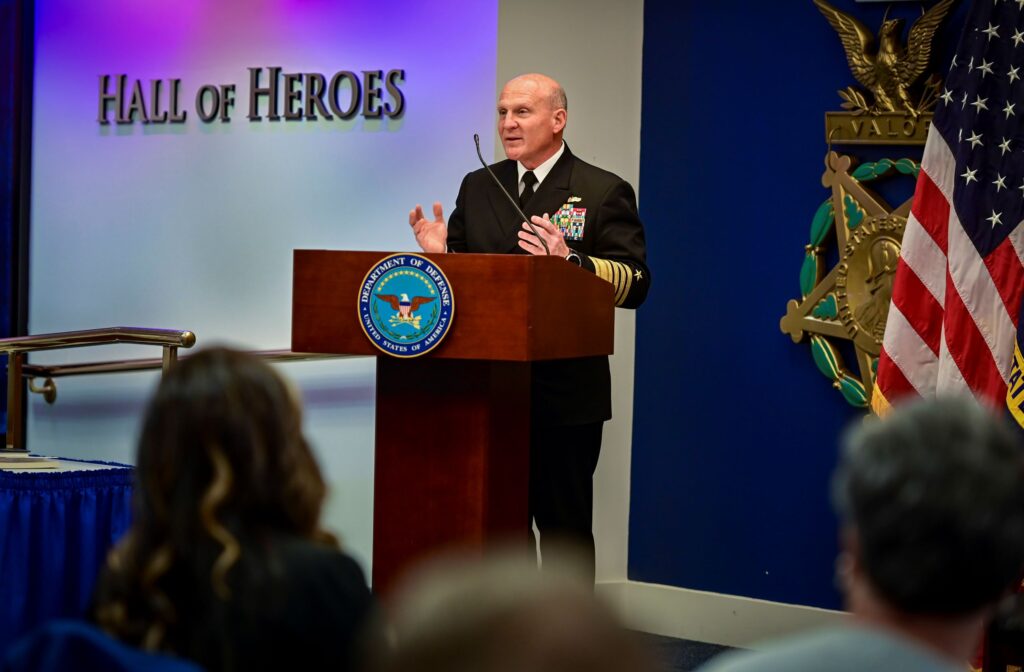
ARLINGTON, Va. — The systems used to train Sailors and Marines need to be linked like their operational counterparts to make training realistic and relevant, the uniformed leaders of the Navy and Marine Corps said.
Chief of Naval Operations Adm. Michael M. Gilday and Commandant of the Marine Corps Gen. David H. Berger were participating Nov. 30 in a fireside chat at the Interservice/Industry Training, Simulation and Education Conference (I/ITSEC) in Orlando, Florida. They covered a wide range of topics related to training and simulation.
The two service chiefs said as their services proceed with increased integration and distribution and work together as a naval force, their training systems need to be linked to provide the realism needed to develop warfighting proficiency.
Berger pointed out that proprietary training systems pose the same challenge to integration as operational systems.
“How do we link them together?” he asked the audience.
Gilday pointed out the need for getting better at integrating lessons learned in exercises. He referred to the insights gained over the past year in fleet battle problems and fleet exercises, including a global large-scale exercise involving five fleets and 30,000 Sailors and Marines.
“As we develop those capabilities, there needs to be a continuous feedback loop … getting real-time feedback from operators,” Gilday said, noting the services also need the capability to record the training to enhance critiques and learning from the training.
What “live virtual constructive [LVC] training has allowed us to do is to test ourselves, to mature our warfighting concepts, to hone our skills, to sharpen those skills, to learn from them,” he said.
“We need the training capabilities that we’re going to invest in to be realistic and relevant,” he said. “So, to that end, they need to be based on physics-based performance aspects, not only of our forces but of potential adversaries.
“We need to rely on LVC more and more,” Gilday said, noting the increasing encroachment on training ranges “is just a fact of life” that can be accommodated by increased use of LVC.
He said it “is easy to take your eye off the training piece” in the competing demands of manning, training, equipping and supplying a warfighting force.
Berger stressed the urgency of increasing the pace of improving training capabilities, arguing, “we cannot be comfortable going at a comfortable, deliberate pace.”
The CMC also said training must be elevated in priority from its current state, and personnel must not only train to become proficient on their platforms but be able to out-think adversaries.
Berger pointed out in aviation training, student pilots start together in training but proceed at different paces toward graduation according to their proficiency. He said other warfare communities may need to adopt the same concept. He also pointed out that in many training pipelines, there are no incentives to learn faster or learn more, saying “we’re not built for that right now.”






